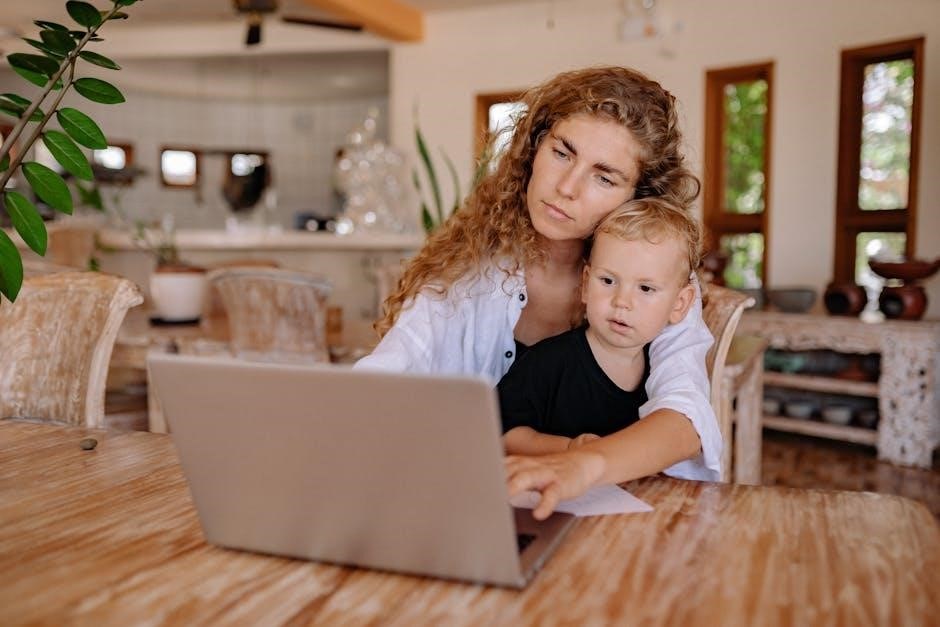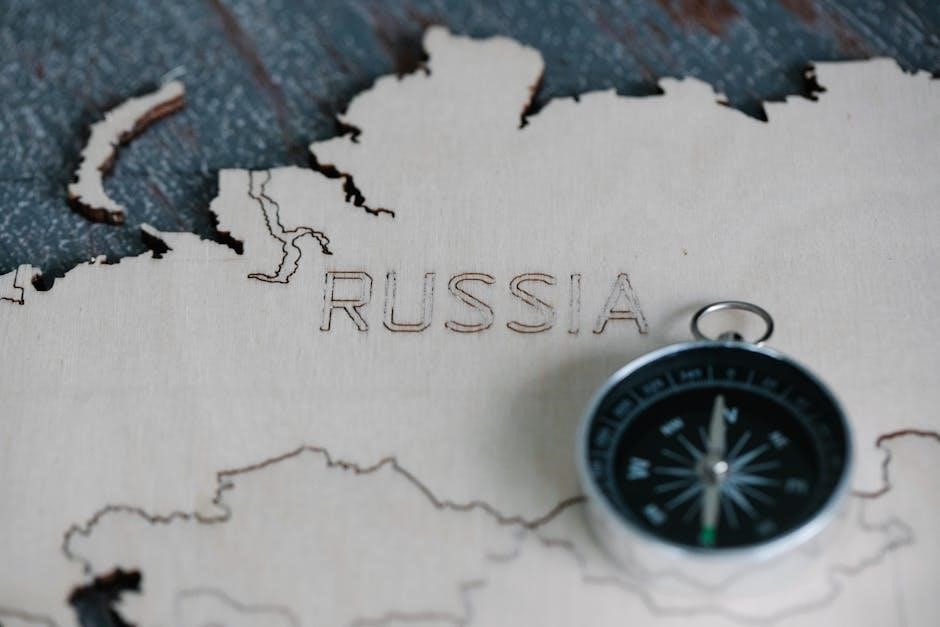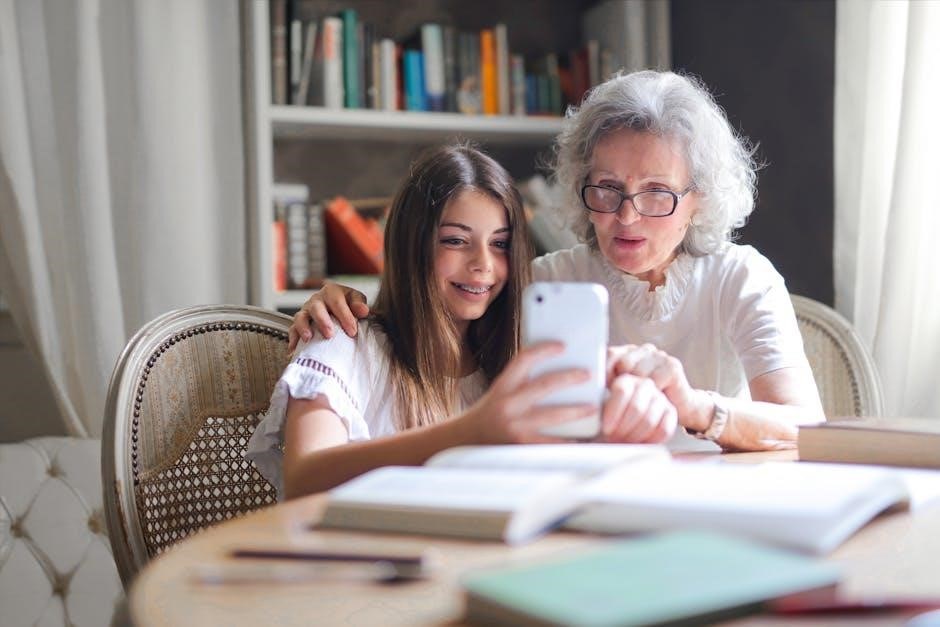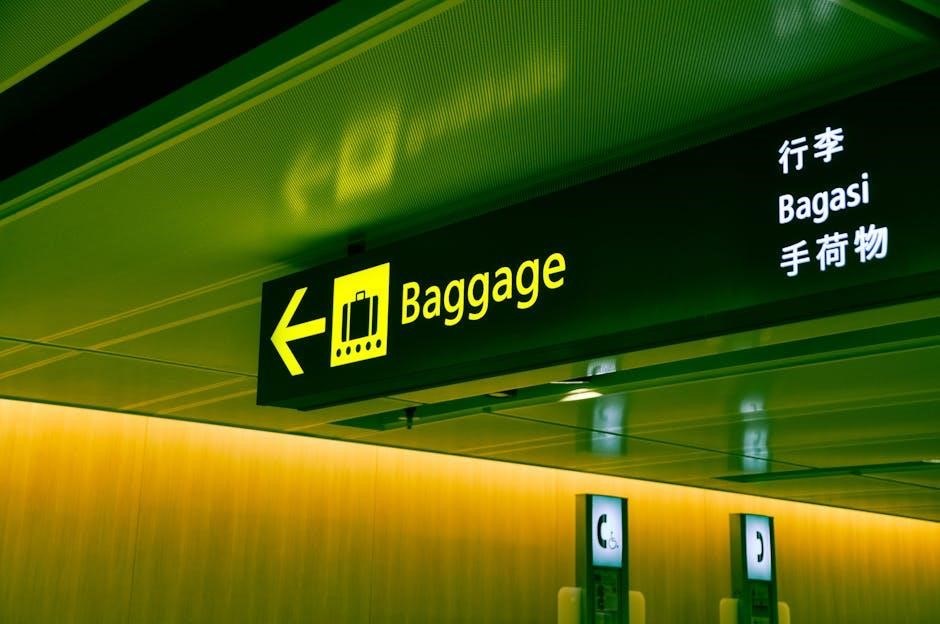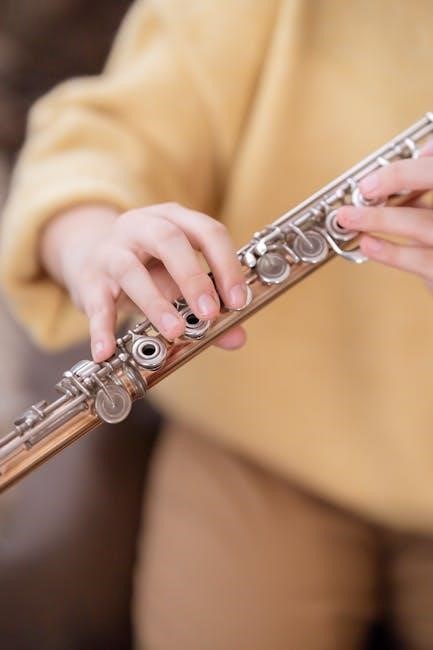TV Guide Plano TX: A Comprehensive Overview (November 29, 2025)
Plano, Texas residents have diverse options for accessing TV listings, including over-the-air broadcasts, cable providers like AT&T U-Verse, Frontier FIOS, and Spectrum, alongside numerous online resources․
Channel access varies; AT&T U-Verse utilizes channel 99 with a Plano selection, Frontier FIOS offers channels 30 & 31, and Spectrum provides Digital Channel 15․101․
KAZD 55․7 features infomercials, while KDTX HDTV 58․1 broadcasts programs like Allen Jackson Now and Stakelbeck Tonight․
TV schedules are readily available for zip codes 75023 and 75093, catering to local broadcast preferences and ensuring viewers stay informed about programming․

Plano, Texas, a vibrant city within the Dallas-Fort Worth metroplex, offers residents a wealth of options when it comes to staying informed about television programming․ Accessing a comprehensive TV guide is essential for navigating the diverse landscape of broadcast, cable, and streaming services available․ This overview aims to provide a detailed resource for Plano viewers seeking accurate and up-to-date TV listings․
The need for a reliable TV guide stems from the sheer number of channels and programs vying for attention․ Whether you prefer local news, national network shows, sports, movies, or specialized content, knowing what’s on and when is crucial․ Plano residents can choose from traditional over-the-air broadcasts, various cable providers – including AT&T U-Verse, Frontier FIOS, and Spectrum – and an increasing number of streaming platforms․
Understanding how to access TV listings specific to Plano, including those tailored to zip codes like 75023 and 75093, is the first step․ This guide will explore both traditional methods, such as cable provider guides and online TV schedule websites, and newer digital tools like TV guide apps, ensuring every viewer can find their preferred method for staying connected to the world of television․
Understanding Local Broadcast Channels
Plano, TX residents have access to a range of local broadcast channels via an antenna, offering a free alternative to cable or satellite subscriptions․ These channels transmit signals over the air, providing access to network programming, local news, and public access content․ However, reception quality can vary depending on location and antenna strength․
Key channels available in the Plano area include KAZD 55․7 and KDTX HDTV 58․1․ KAZD often features infomercials alongside other programming, while KDTX broadcasts a mix of news, talk shows, and religious content, including programs like Allen Jackson Now and Stakelbeck Tonight․ Accessing a current TV schedule is vital to knowing what’s airing on these channels․
To find a complete listing of available broadcast channels and their corresponding frequencies, viewers can utilize online resources dedicated to over-the-air TV listings․ These resources often allow users to input their zip code (e․g․, 75023 or 75093) to generate a customized channel lineup․ Understanding these local options is a cost-effective way to enjoy television in Plano․
Cable TV Options in Plano, TX
Plano, Texas offers a competitive cable television market with several providers vying for viewership․ Major players include AT&T U-Verse, Frontier FIOS, and Spectrum, each offering a variety of channel packages and pricing tiers to suit diverse needs․ Accessing accurate TV listings is crucial for maximizing your cable subscription․
AT&T U-Verse subscribers can navigate to channel 99 and select “Plano” from the drop-down menu to view localized programming guides․ Frontier FIOS customers can find listings on channels 30 and 31, providing a quick overview of available content․ Spectrum offers Digital Channel 15․101 as a resource for viewing schedules․
Each provider’s channel lineup differs, so consulting their specific TV guide is essential․ Online resources and dedicated apps also provide comprehensive TV listings, allowing viewers to search by channel, time, or program title․ Comparing packages and utilizing these tools ensures Plano residents find the best cable option․
AT&T U-Verse Channel Access
AT&T U-Verse provides Plano, Texas residents with a convenient method for accessing localized TV listings directly through their television interface․ Unlike some providers, AT&T U-Verse centralizes its guide access on a single, easily navigable channel․
To view the TV guide specific to the Plano area, U-Verse subscribers simply need to tune to channel 99․ Upon selecting channel 99, a menu will appear, prompting users to choose their desired location for accurate programming information․ Selecting “Plano” from this drop-down menu ensures the displayed TV listings reflect local broadcasts and channel availability․
This streamlined approach simplifies the process of finding what’s on TV, allowing viewers to quickly browse schedules and discover upcoming programs․ Utilizing channel 99 is the most direct way to stay informed about TV programming on AT&T U-Verse in Plano․
Frontier FIOS Channel Numbers
Frontier FIOS offers Plano, Texas customers dedicated channels for accessing TV listings, providing a straightforward way to stay updated on local programming․ Unlike some providers with complex guide navigation, Frontier FIOS utilizes two specific channels for this purpose․
Plano-area Frontier FIOS subscribers can find TV listings on channels 30 and 31․ These channels are specifically programmed to display the current and upcoming TV schedule, allowing viewers to easily browse programs by channel and time․ The content on these channels is regularly updated to reflect the most accurate information․
By simply tuning to either channel 30 or 31, Frontier FIOS customers can quickly access a comprehensive TV guide tailored to their location․ This direct access ensures viewers remain informed about their favorite shows and local broadcasts within the Plano region․
Spectrum Digital Channel Information
Spectrum, a prominent cable provider in Plano, Texas, delivers TV listings through a dedicated digital channel, offering a convenient way for subscribers to explore available programming․ Unlike traditional methods, Spectrum utilizes a specific digital channel number for its interactive TV guide․
Plano-based Spectrum customers can access TV listings on Digital Channel 15․101․ This channel provides an on-screen guide displaying current and upcoming shows, categorized by channel and time․ The interactive format allows users to easily navigate and search for specific programs or genres․
Channel 15․101 on Spectrum is regularly updated, ensuring viewers have access to the most accurate and current TV schedule․ This feature simplifies the process of finding desired content and staying informed about local broadcasts within the Plano area, enhancing the overall viewing experience․
Over-the-Air TV Listings for Plano
Plano, Texas residents have the option of accessing TV listings directly through over-the-air (OTA) broadcasts, utilizing an antenna to receive signals from local stations․ This method provides a free alternative to cable or satellite subscriptions, offering access to a range of channels․
For those utilizing OTA, understanding available channels is crucial․ KAZD 55․7 and KDTX HDTV 58․1 are examples of stations broadcasting in the Plano area․ KAZD often features infomercials, while KDTX broadcasts programs like Allen Jackson Now and Stakelbeck Tonight․
Accessing a comprehensive TV schedule for OTA broadcasts requires utilizing online resources specifically designed for antenna viewers․ These websites compile listings for local channels, allowing Plano residents to plan their viewing․ The availability of channels can vary based on antenna strength and location within Plano․
Specific Channel Listings ⎯ KAZD 55․7
KAZD 55․7, a local channel available in the Plano, Texas area, primarily broadcasts infomercials, offering viewers product demonstrations and promotional content․ As of November 29, 2025, the programming schedule for KAZD 55․7 is heavily focused on these extended advertisements․
Currently, the channel features infomercials airing at 6:00 PM and again at 6:30 PM․ This pattern suggests a consistent schedule dedicated to direct-response television․ While not offering traditional network programming, KAZD 55․7 provides an alternative viewing option for those interested in discovering new products or services․
Viewers accessing TV listings for Plano will find KAZD 55․7 listed with these infomercial blocks․ It’s important to note that the specific products featured in these infomercials can change frequently, offering a dynamic, albeit advertisement-driven, viewing experience․
KAZD 55․7 Programming Schedule
As of November 29, 2025, KAZD 55․7’s programming schedule in the Plano, TX area is predominantly dedicated to infomercials․ The channel operates with a consistent format, prioritizing direct-response television over traditional broadcast content․
The current schedule indicates infomercials are broadcast at fixed times: 6:00 PM and 6:30 PM․ This suggests a repeating block of infomercials throughout the day and evening․ Viewers seeking diverse entertainment options may find limited appeal, as the channel’s focus remains firmly on product promotion․
TV Guide listings for KAZD 55․7 will consistently reflect this infomercial-heavy schedule․ While specific product offerings within the infomercials will vary, the overall programming structure remains predictable․ Residents in Plano can rely on this schedule for consistent infomercial blocks during these designated time slots․
Specific Channel Listings ౼ KDTX HDTV 58․1
KDTX HDTV 58․1, serving the Plano, TX viewing area as of November 29, 2025, presents a programming lineup that leans towards religious and talk-based content․ Unlike channels focused on entertainment or news, KDTX offers a distinct alternative for viewers seeking these genres․
Currently, the schedule highlights Allen Jackson Now at 6:00 PM, followed by Stakelbeck Tonight at 6:30 PM․ These programs suggest a focus on Christian perspectives and current events analysis․ TV Guide listings for KDTX HDTV 58․1 will consistently reflect this programming pattern․
Plano residents utilizing over-the-air antennas or digital TV guides can expect this consistent schedule․ While specific program details beyond these listed times are not readily available, the channel’s core identity centers around faith-based and talk-radio style broadcasts․ Viewers can anticipate similar content throughout the day․
KDTX HDTV 58․1 Programming Schedule
As of November 29, 2025, KDTX HDTV 58․1’s programming schedule for Plano, TX, demonstrates a consistent focus on religious and talk-based programming․ The channel distinguishes itself from mainstream networks with its niche content offerings․
The currently available schedule indicates Allen Jackson Now airs at 6:00 PM, providing a platform for Christian ministry and teachings․ Immediately following, at 6:30 PM, Stakelbeck Tonight delivers a conservative perspective on current events and cultural issues․ This back-to-back arrangement highlights the channel’s core programming pillars․
TV viewers in Plano can anticipate a continuation of this thematic approach throughout the day․ While a comprehensive, hour-by-hour schedule isn’t widely publicized, KDTX HDTV 58․1 consistently delivers content aligned with these genres․ Accessing detailed listings through online TV guides is recommended for specific program times․
Accessing TV Listings Online
Plano, TX residents have a wealth of online resources for accessing comprehensive TV listings, moving beyond traditional printed guides․ Numerous websites and applications provide up-to-date schedules for all major broadcast and cable providers, including AT&T U-Verse, Frontier FIOS, and Spectrum․
These platforms allow users to filter listings by channel, time, and genre, ensuring they can quickly find programs of interest․ Many sites also offer features like personalized recommendations and the ability to set reminders for favorite shows․ This digital accessibility streamlines the TV viewing experience․
Furthermore, online TV guides often include detailed program descriptions, cast information, and user reviews․ This enhanced information empowers viewers to make informed decisions about what to watch․ Utilizing these online tools is essential for staying current with the ever-changing TV landscape in Plano․
Popular TV Listing Websites for Plano, TX
Plano, TX viewers have several excellent online options for discovering what’s on TV․ Dedicated TV listing websites provide comprehensive schedules tailored to the Plano area, covering local broadcasts and cable providers like AT&T U-Verse, Frontier FIOS, and Spectrum․ These platforms aggregate data from various sources, offering a centralized hub for program information․
Many popular sites allow users to input their zip code (75023 or 75093) to refine listings based on local channel availability․ This ensures accuracy and relevance for Plano residents․ Beyond basic schedules, these websites frequently include program descriptions, cast details, and even links to streaming options․
The convenience of accessing TV guides online, coupled with features like search functionality and personalized recommendations, makes these websites invaluable resources for Plano’s TV viewing public․ Staying informed about program schedules has never been easier․
Using TV Guide Websites and Apps

TV Guide websites and dedicated mobile applications have revolutionized how Plano, TX residents access TV listings․ These digital platforms offer a user-friendly experience, surpassing traditional printed guides in convenience and functionality․ Users can quickly browse schedules for local channels, including over-the-air broadcasts and those offered by providers like AT&T U-Verse, Frontier FIOS, and Spectrum․

Most platforms allow customization, enabling viewers to select their preferred TV provider and zip code (75023 or 75093) for tailored results․ Interactive features, such as program searches and genre filtering, simplify finding desired content․
Furthermore, many apps offer the ability to set reminders for upcoming shows, ensuring viewers never miss a favorite program․ The accessibility of these tools, available on smartphones and tablets, makes staying updated with Plano’s TV schedules effortless․
Filtering Listings by Genre
Plano, TX TV viewers benefit greatly from the genre-filtering capabilities available on modern TV guide websites and apps․ This feature allows users to narrow down vast TV listings to specific categories, streamlining the search for preferred content․ Whether seeking thrilling dramas, informative news programs, engaging sports broadcasts, or entertaining children’s shows, filtering simplifies the process․
Users can easily exclude unwanted genres, such as infomercials, further refining their search․ This is particularly useful when exploring schedules for channels like KAZD 55․7 and KDTX HDTV 58․1, which may feature diverse programming․
Filtering by genre is available across various platforms, including those supporting AT&T U-Verse, Frontier FIOS, and Spectrum, ensuring a personalized TV viewing experience tailored to individual preferences within the Plano area․
Setting Reminders for Favorite Shows
Plano, TX residents can maximize their TV viewing experience by utilizing the reminder features available on TV guide websites and applications․ These tools allow viewers to schedule notifications for upcoming episodes of their favorite programs, ensuring they never miss a moment of the action․ Reminders are particularly valuable given the diverse programming options available through providers like AT&T U-Verse, Frontier FIOS, and Spectrum․
Users can set reminders for specific shows airing on local channels such as KAZD 55․7 and KDTX HDTV 58․1, or for programs broadcast across various cable networks․ Customizable alerts can be configured to notify viewers in advance, providing ample time to prepare for their viewing experience․
This feature is essential for staying updated with TV listings and managing busy schedules, guaranteeing enjoyment of preferred content within the Plano viewing area․
Navigating TV Schedules by Time
Plano, TX TV viewers can efficiently explore programming options by utilizing the time-based navigation features available on most TV guide platforms․ These tools allow users to quickly scan schedules for specific time slots, identifying shows airing at desired moments throughout the day․ This is particularly useful when planning viewing around personal commitments or seeking immediate entertainment․
Whether accessing schedules online or through provider-specific guides like those offered by AT&T U-Verse, Frontier FIOS, or Spectrum, viewers can easily pinpoint programs airing on local channels like KAZD 55․7 and KDTX HDTV 58․1․

Time-based navigation simplifies the process of discovering what’s on TV, ensuring residents don’t miss out on preferred content within the Plano broadcast area, and allows for spontaneous viewing decisions․
Understanding TV Schedule Formats
TV schedule formats in Plano, TX, vary depending on the source, but generally present information in a structured grid or list․ Online TV guides and provider listings (AT&T U-Verse, Frontier FIOS, Spectrum) typically display programs chronologically, with start and end times clearly indicated․ Channel numbers are prominently featured, allowing quick identification of desired networks․
Broadcast listings for zip codes 75023 and 75093 often categorize programs by genre – news, sports, movies, or children’s programming․ KAZD 55․7 and KDTX HDTV 58․1 schedules may denote program types like infomercials or talk shows․
Understanding these formats enables Plano viewers to efficiently navigate TV listings, quickly locate preferred shows, and plan their viewing experience․ Recognizing common abbreviations and symbols further enhances comprehension of the presented information․
Local News Channels in Plano, TX

Plano, TX residents have access to a variety of local news channels through both broadcast and cable providers like AT&T U-Verse, Frontier FIOS, and Spectrum․ While specific channel numbers fluctuate based on provider and package, major networks offering local news coverage are widely available․
Typically, local affiliates of national networks – such as NBC, CBS, ABC, and FOX – dedicate significant airtime to regional news, weather, and community events relevant to the Plano area․ These broadcasts often include coverage of local government, school board meetings, and crime reports․

Accessing TV listings for zip codes 75023 and 75093 allows viewers to pinpoint specific newscast times and stay informed about happenings within their community․ Online TV guide resources further simplify the process of finding local news programming․
Sports Channel Availability in Plano
Plano, TX sports enthusiasts have numerous options for catching their favorite games and teams, dependent on their chosen TV service provider – AT&T U-Verse, Frontier FIOS, or Spectrum․ Availability of specific sports channels varies considerably based on subscription packages․
Commonly available sports networks include ESPN, ESPN2, Fox Sports Networks (FSN), and regional sports networks (RSNs) that broadcast local teams․ Access to premium sports packages, offering channels like NFL Network, NBA TV, and MLB Network, often requires an additional subscription fee․
Utilizing online TV listings and provider guides is crucial for confirming channel lineups and game schedules․ Viewers in zip codes 75023 and 75093 can easily find information regarding upcoming sports events and channel availability through dedicated TV guide websites and apps․
Movie Channel Options in Plano, TX
Plano, Texas residents seeking cinematic entertainment through their televisions have a variety of movie channel options, largely determined by their TV service provider – AT&T U-Verse, Frontier FIOS, or Spectrum․ Basic cable packages typically include a selection of popular movie channels, while premium options require additional subscriptions․
Commonly available movie channels include HBO, Cinemax, Showtime, and Starz, each offering a rotating selection of recent releases, classic films, and original programming․ Spectrum often bundles movie channels into packages, while AT&T U-Verse and Frontier FIOS allow for more à la carte selections․
To confirm specific channel availability and programming schedules, viewers in zip codes 75023 and 75093 should consult their provider’s TV guide or utilize online TV listing websites and apps․ These resources provide up-to-date information on movie premieres and showtimes․
Children’s Programming Schedules
Plano, TX families seeking age-appropriate entertainment options have several avenues for discovering children’s programming schedules․ TV service providers – AT&T U-Verse, Frontier FIOS, and Spectrum – dedicate specific blocks of time to kids’ shows, often during morning and afternoon hours․
Channels like Nickelodeon, Disney Channel, Cartoon Network, and PBS Kids are staples for children’s programming․ These channels feature a mix of animated series, live-action shows, and educational content․ Online TV guides and apps provide detailed schedules, allowing parents to plan viewing times․

Residents in zip codes 75023 and 75093 can also find dedicated children’s programming blocks on local broadcast channels․ Checking weekly TV listings is crucial, as schedules can vary․ Utilizing parental control features offered by TV providers ensures a safe viewing experience․
Finding Infomercial Schedules
Locating infomercial schedules in Plano, TX can be surprisingly challenging, as they often fill gaps in programming blocks․ Traditional TV guides don’t always explicitly list infomercials, but several strategies can help viewers anticipate them․
Channel KAZD 55․7, as of November 29, 2025, frequently broadcasts infomercials, particularly during the late evening and early morning hours․ Online TV listing websites often categorize these as “paid programming” or simply list them as “infomercials․”
Checking the schedules for local broadcast channels is key, as infomercials are common during off-peak viewing times․ Residents in zip codes 75023 and 75093 can utilize TV provider guides (AT&T U-Verse, Frontier FIOS, Spectrum) to identify potential infomercial slots․
Remember that infomercial schedules are fluid and subject to change, so frequent checks are recommended․
TV Listings for Zip Code 75023

Plano, Texas zip code 75023 residents have a wealth of options for accessing local TV listings․ Utilizing over-the-air broadcasts alongside cable providers like AT&T U-Verse, Frontier FIOS, and Spectrum ensures comprehensive coverage․
For those relying on antenna reception, checking broadcast TV listings specific to Plano is crucial․ Online TV guide websites and apps provide detailed schedules for channels like KAZD 55․7 and KDTX HDTV 58․1, showcasing programs such as infomercials on 55․7 and Allen Jackson Now on 58․1․
Cable subscribers can access listings through their provider’s on-screen guide or website․ AT&T U-Verse users can navigate to channel 99 and select Plano, while Frontier FIOS offers channels 30 and 31․ Spectrum provides Digital Channel 15․101․
Staying updated with these resources guarantees viewers in 75023 won’t miss their favorite shows․
TV Listings for Zip Code 75093
Residents within Plano, Texas zip code 75093 benefit from a variety of avenues to discover current TV listings․ Options range from traditional over-the-air broadcasts to comprehensive cable services offered by providers such as AT&T U-Verse, Frontier FIOS, and Spectrum, ensuring broad accessibility․
For antenna users, dedicated broadcast TV listings tailored to the Plano area are essential․ Numerous online TV guide platforms and mobile applications deliver detailed schedules for local channels, including KAZD 55․7 (featuring infomercials) and KDTX HDTV 58;1 (broadcasting programs like Stakelbeck Tonight)․

Cable subscribers can conveniently access schedules through their provider’s interactive guide or website․ AT&T U-Verse customers can find Plano-specific listings on channel 99, while Frontier FIOS utilizes channels 30 and 31․ Spectrum offers Digital Channel 15․101․
Utilizing these resources ensures 75093 viewers remain informed and entertained․
Future Trends in TV Guide Information
The landscape of TV guide information in Plano, TX, and beyond, is poised for significant evolution․ Expect increased personalization driven by artificial intelligence, offering tailored recommendations based on viewing habits and preferences․ Streaming services will further integrate with traditional TV listings, creating unified schedules․
Voice control and smart home integration will become commonplace, allowing viewers to navigate TV schedules and set reminders hands-free․ Interactive TV guides will offer deeper content discovery, including trailers, cast information, and user reviews․
Hyperlocal TV listings, focusing on Plano events and community programming, will gain prominence․ Augmented reality applications may overlay program information directly onto the TV screen․ The convergence of broadcast, cable, and streaming data will provide a comprehensive and seamless viewing experience for Plano residents․
These advancements aim to simplify and enhance how viewers access and engage with TV content․
Resources for Plano, TX TV Listings
Plano, TX residents have a wealth of resources available for accessing comprehensive TV listings․ Numerous websites specialize in aggregating schedules from various providers, including broadcast, cable (AT&T U-Verse, Frontier FIOS, Spectrum), and streaming services․
Dedicated TV guide websites and mobile applications offer convenient access to program information, allowing users to search by channel, time, or genre․ Local news websites often feature TV schedules highlighting local programming and events․
Channel providers themselves – AT&T, Frontier, and Spectrum – offer online TV guides accessible through their websites or apps․ For over-the-air broadcasts, websites specializing in antenna TV provide detailed schedules․
Furthermore, general entertainment websites frequently include TV listings as part of their broader content offerings, ensuring Plano viewers remain well-informed about what’s on․
Staying Updated with Plano TV Schedules
In Plano, TX, keeping abreast of TV schedules is remarkably accessible thanks to a diverse range of resources․ From traditional cable providers like AT&T U-Verse, Frontier FIOS, and Spectrum, each offering their own guides, to over-the-air broadcast options, viewers have choices․
Leveraging online TV listing websites and apps provides a centralized and convenient way to explore programming across all available channels․ Utilizing features like genre filtering and show reminders enhances the viewing experience․
Remembering that channel access differs between providers – channel 99 for AT&T, 30/31 for Frontier, and 15․101 for Spectrum – is key to efficient navigation․
By combining these resources, Plano residents can ensure they never miss their favorite programs and remain fully informed about the ever-changing landscape of television entertainment․













